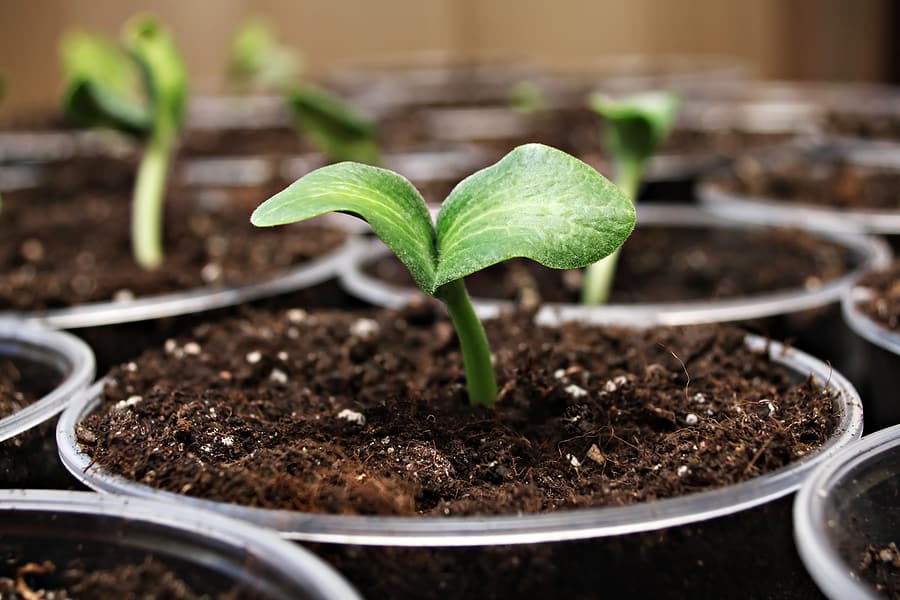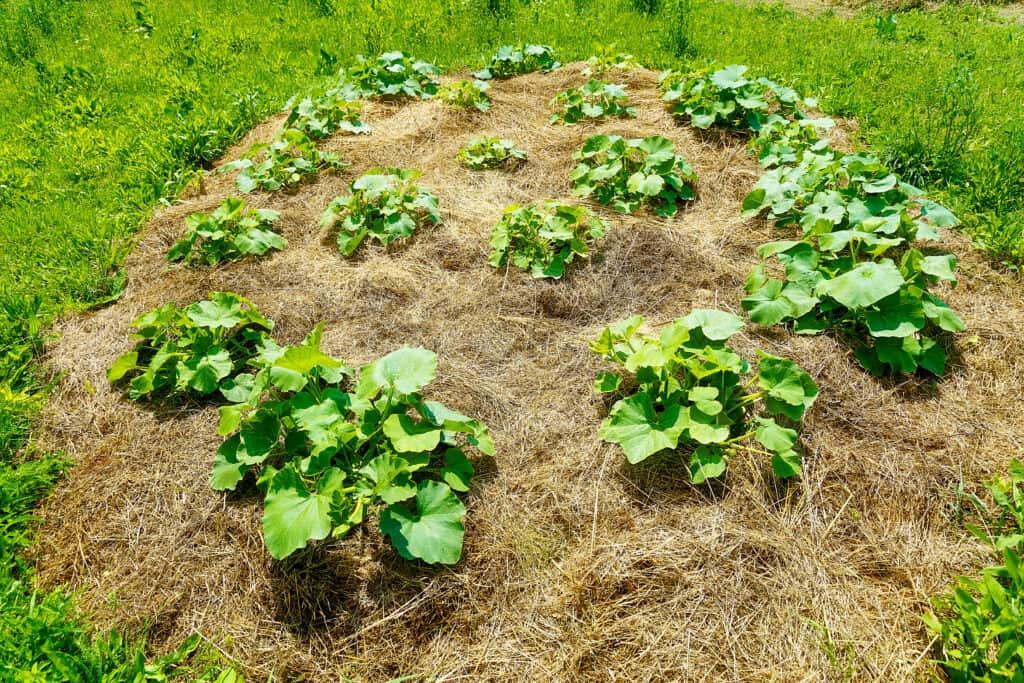Winter squash is a rewarding and flavorful crop to grow in the home garden, offering a long shelf life and rich, nutritious flesh perfect for soups, roasts, and baking. As a longtime gardener with decades of hands-on experience growing dozens of winter squash varieties—from sweet Delicata to hearty Blue Hubbard—I’ve learned what it takes to get a healthy, productive crop from seed to harvest. In this post, I’ll walk you through everything you need to know to plant and grow winter squash successfully, sharing practical tips and insights I’ve learned through trial and error over the years.
We’ll start with an overview of winter squash and the different types you can grow, then dive into the best time to plant, where to locate your squash patch, and how to get your seeds or seedlings off to a strong start. Whether you’re a first-time gardener or looking to improve your harvest, this guide is designed to help you grow winter squash confidently, using proven techniques grounded in both experience and expert-backed growing practices.
Winter Squash Overview
Native Americans called it isquoutersquash. The British call it marrow. Squash is the American English term.
Winter squash is a group of hardy, long-season vegetables known for their thick, inedible rinds and sweet, nutty flesh. Unlike summer squash, which is harvested young and tender, winter squash is left to fully mature on the vine, developing a protective outer skin that allows it to be stored for months after harvest. Popular varieties include butternut, acorn, spaghetti, kabocha, and Hubbard squash, each with its own unique flavor and culinary uses. These squash thrive in warm weather but are harvested in late summer or fall, making them a staple for hearty winter meals.
Winter squash and summer squash differ primarily in their harvest time, skin texture, and storage ability. Winter squash, such as butternut, acorn, and spaghetti squash, is grown for long-term storage and is harvested when fully mature, with a hard, thick rind that protects the flesh inside. This tough skin allows winter squash to be stored for months without refrigeration. In contrast, summer squash, like zucchini and yellow squash, is harvested young and tender, with thin, edible skin and a high moisture content, making it more perishable. Additionally, winter squash varieties require a longer growing season and are typically vine-growing, whereas many summer squash types grow in bush form and produce fruit continuously throughout the season.
Plant squashes in full sun in compost-rich, well-drained soil. Squash likes to get its start in the spot where it will grow, but if you want to get a jump on the season, start seed indoors 3 to 4 weeks before the last expected frost in 4-inch biodegradable pots (that can be set directly in the ground at planting time so that the roots are not disturbed). A week before transplanting, harden off seedlings by cutting back on the water and lowering the nighttime temperature to 65°F.

When to Plant Squash
Sow squash indoors 3 to 4 weeks before the last expected frost in spring. Sow squash outdoors when the soil temperature has warmed to 70°F (21°C). Protect squash in the garden from cool temperatures with row covers.
Squash wants warm soil and air temperatures for growing—the 70s°F is optimal. Squash seeds won’t germinate in cold soil. Wait until the soil temperature has reached 60°F before direct seeding or setting out starts. Lay down a sheet of black plastic to warm the soil before sowing or planting. Plants started in chilly temperatures may become stunted.
- 2-4 weeks before the last frost in spring: start seed indoors for transplanting into the garden later.
- 2-3 weeks after the last frost in spring: transplant seedlings to the garden.
- 3 weeks after the last frost in spring: direct sow seed in the garden; minimum soil temperature is 65°F; protect with row covers if nights or days are cool.
Where to Plant Squash
- Plant squash in full sun.
- Grow squash in loose, well-drained soil rich in organic matter.
- Prepare planting beds in advance working with plenty of aged compost. Add aged manure to planting beds in the autumn before growing squash.
- Squash prefers a soil pH of 5.5 to 6.8.
- Winter squashes will sprawl and require ample space; if space is tight train them over a small A-frame or up a trellis as tall as 5 to 8 feet (1.5-2.4m).
Squash Planting Time
Sow squash or set out transplants about 2 weeks after the last expected frost in spring. Sow or plant successive crops 4 weeks later.
- Squashes are frost-tender, warm-season annuals.
- Sow squash seeds in the garden–or set out seedlings started indoors–only after the soil has warmed to at least 60°F (16°C), usually no sooner than 3 weeks after the last frost in spring.
- Start squashes indoors as early as 4 weeks before the last average frost date in spring.
- Sow seed indoors in biodegradable peat or paper pots that can be set directly in the garden so as not to disturb plant roots.
- Squashes grow best in air temperatures ranging from 60° to 75°F (16-24°C); established fruit will ripen in temperatures as high as 100°F (37°C) but flowers will drop in high temperatures.
- Squashes are warm-season crops and very sensitive to cold and frost.
- Squashes require 50 to 65 days to reach harvest.

Planting Squash
You can avoid a harvest too large (especially for zucchini) by simply not overplanting. One zucchini plant will produce 6 to 10 pounds of fruit over the course of the season. Stagger plantings so that you have a continuous harvest but are not overwhelmed.
Check spacing requirements for each variety you grow. If the garden is tight, contain the plant by pinching out the growing tips after a vine has set a few fruits. Don’t grow squash too close together; this will help deter pests and diseases.
Sow seed or set transplants in raised mounds at least 1 foot across. Place a generous amount of aged compost or aged manure into each planting hill before planting. For an extra early harvest, start seeds in peat pots indoors 3 weeks before the last frost for planting out after the last frost.
- Sow squash seeds 2 to 3 inches deep.
- Sow squash in raised hills or inverted hills with 4 to 5 seeds set 3 to 4 inches (7-10cm) apart; thin to the two strongest seedlings.
- Space hills 6 to 8 feet (1.8-2.4m) apart.
- In rows, plant 2 squash seeds 10 inches (25cm) apart in rows 3 to 5 feet (.9-1.5m) apart; thin successful seedlings in rows to 3 feet (.9m) apart.
- Thin seedlings by cutting off weak seedlings at soil level with scissors so as not to disturb fragile roots.
- Hills or mounds should be 6 to 12 inches (15-30cm) tall and 20 inches (50cm) across. This will allow plants to run down the hill away.
- Inverted hills (basins)–which can be used to retain moisture in dry regions–can be made by removing an inch of soil from an area about 20 inches across and using the soil to form a ring or circle.
- Plant 4 or 5 seeds in each inverted hill.
- Squash Yield. Grow 1 or 2 summer squash plants per household member.
Squash Companion Plants
Grow squash with celeriac, celery, corn, nasturtiums, melons, onions, radishes, peas, and beans. Avoid growing squash with potatoes.
- Grow winter squash with nasturtiums, bush peas, and beans.
- Avoid planting summer squashes in the shadows of taller plants.
Related posts you might find helpful:
Summer Squash
- How to Grow Summer Squash and Zucchini: A Gardener’s Guide
- Planting and Growing Summer Squash
- Summer Squash Care and Maintenance
- The Best Summer Squash & Zucchini Varieties for Your Garden
- How to Harvest and Store Summer Squash
- Eight Ways to Cook and Serve Summer Squash
Winter Squash
- The Ultimate Guide to Growing Winter Squash
- Planting and Growing Winter Squash
- Winter Squash Care and Maintenance
- The Best Winter Squash Varieties for Your Garden
- Harvesting & Storing Winter Squash for Long-Term Use
- Seven Ways to Cook and Serve Winter Squash
Squash Planting and Care
- Squash Seed Starting Tips: How to Grow Strong, Healthy Plants from the Start
- How to Maximize Squash Pollination for Bigger Harvests
- Growing Squash in Small Spaces: Trellising & Container Growing
- How to Prevent and Treat Squash Pests and Diseases Naturally
- Squash Vine Borer Organic Pest Control
- Squash Bug Organic Pest Control
Books to help you grow:
- Vegetable Garden Almanac & Planner
- Kitchen Garden Grower’s Guide Vegetable Encyclopedia
- Vegetable Garden Grower’s Guide
- Tomato Grower’s Answer Book



